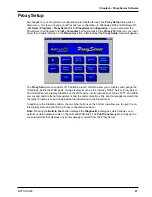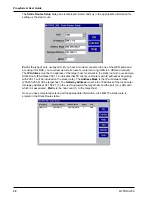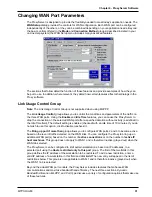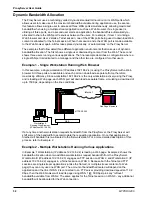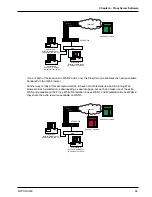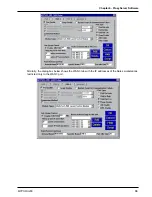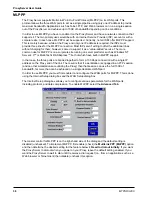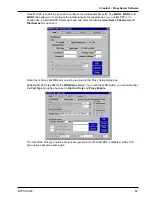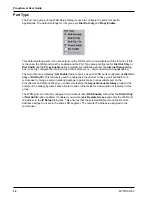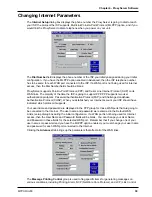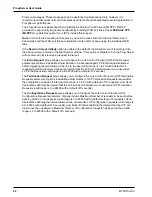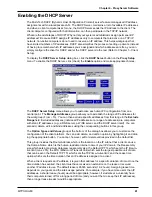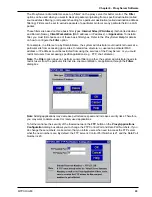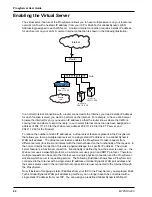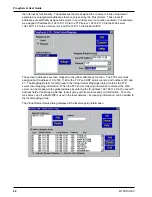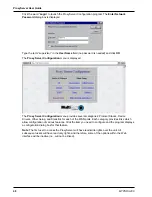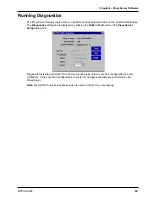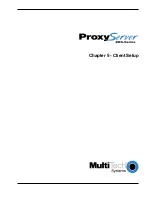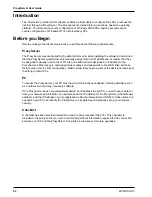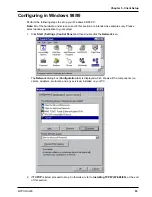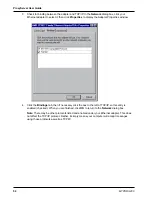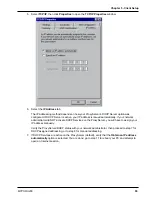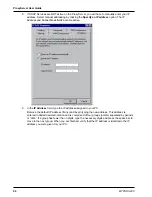
Chapter 4 - ProxyServer Software
MTPSR3-200
41
Enabling the DHCP Server
The Multi-Tech DHCP (Dynamic Host Configuration Protocol) server feature manages all IP address
assignments within a local/private LAN. The DHCP Server maintains a list of available IP addresses
and when a client computer asks for one, the DHCP Server sends the IP Address to the client. The
client computer, configured with that information, can then participate in the TCP/IP network.
What are the advantages of DHCP? Why not let your systems administrator assign permanent IP
addresses? Because DHCP assigns IP addresses only to computers that are active on a TCP/IP
network, non-active computers do not need to reserve an IP address. This helps workgroups that
have limited numbers of IP addresses. DHCP also simplifies the process of setting up clients. Instead
of having to remember which IP addresses you’ve assigned and which addresses are free, you can
simply configure the client for DHCP and let the DHCP server do the rest (Refer to Chapter 5 - Client
Setup).
To display the DHCP Server Setup dialog box, click the DHCP Server button on the Proxy Setup
menu. To enable the DHCP Server, click (check) the Enable option and make appropriate choices.
The DHCP Server Setup menu allows you to customize each client PC configuration from one
central point. The Manage Addresses group allows you to establish the range of IP addresses for
the workgroup (From - To). You can then exclude specific addresses from that range in the Exclude
Range field. Excluded addresses (individual IP addresses or a range of addresses) are computers
with static IP addresses (e.g., a DNS server, a WINS server, and the DHCP server itself). You can
also add, delete, edit, and bind addresses using the corresponding buttons in this group.
The Option Types and Values group at the bottom of the dialog box allows you to customize the
configuration of the client platform. You can add, delete, and edit an option by highlighting it and click-
ing the appropriate button. You cannot, however, edit or delete entries provided in the default list.
This group includes the Router Address which is the location on the IP subnet that a client can use;
the Domain Name which is the human-readable Internet name of your IP domain; the Reassembly
size which sets a maximum datagram reassembly size; the Default IP TTL which sets the IP time-to-
live limit (max. 255); the MTU (Maximum Transmit Unit) which sets the largest possible unit of data
that can be sent; the Default TCP TTL which sets the TCP time-to-live limit; and the Lease time
option which sets the time duration that an IP address is assigned to a client.
When a client requests an IP address, it is given that address for a specific duration of time. Once the
time duration has expired, the client must have received an extension on the lease or received
another IP address to use. The default lease is 65535 seconds (18.2 hours). Assigning lease time
depends on your goals and the site’s usage patterns. For example, if you have more users than IP
addresses, a shorter lease (hours) would be appropriate; however, if students at a university have
their computers turned off for a long period of time (and you want them to keep their IP addresses),
then a longer lease (weeks) would be appropriate.
Summary of Contents for ProxyServer MTPSR3-200
Page 1: ...Internet Access for LAN Based Users Model MTPSR3 200 User Guide ...
Page 5: ...Chapter 1 Introduction and Description ...
Page 11: ...Chapter 2 Installation ...
Page 15: ...Chapter 3 Software Loading and Configuration ...
Page 24: ...ProxyServer User Guide MTPSR3 200 24 ...
Page 25: ...Chapter 4 ProxyServer Software ...
Page 51: ...Chapter 5 Client Setup ...
Page 68: ...ProxyServer User Guide MTPSR3 200 68 ...
Page 69: ...Chapter 6 RAS Dial Out Redirector ...
Page 79: ...Chapter 7 Remote Configuration ...
Page 82: ...ProxyServer User Guide MTPSR3 200 82 ...
Page 83: ...Chapter 8 ProxyServer Management ...
Page 89: ...Chapter 9 Service Warranty and Tech Support ...
Page 95: ...Appendices ...
Page 112: ...ProxyServer User Guide MTPSR3 200 112 ...
Page 113: ...Glossary of Terms ...
Page 130: ...ProxyServer User Guide MTPSR3 200 130 X XON XOFF Pass Through command 107 ...

